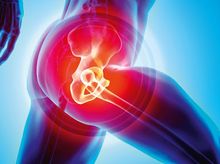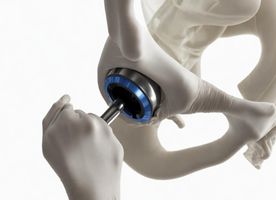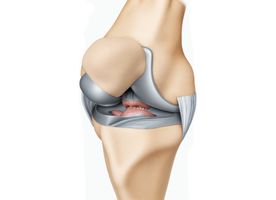Hip Surgery in An Giang
Search and Compare the Best Clinics and Doctors at the Lowest Prices for Hip Surgery in An Giang




































































































































No Time?
Tell us what you're looking for and we'll reach out to the top clinics all at once
What does a Hip Surgery Procedure Involve?
Depending on your condition, your options include total hip replacement (arthroplasty), hip resurfacing, arthroscopy, and osteotomy. The most common hip surgery is a total hip replacement, in which your hip joint is removed and replaced by an artificial joint made from metal and plastic components.
Hip Surgery ordinarily encompasses several critical stages. The initial phase consists of anesthesia administration, which guarantees you don't undergo any pain throughout the operation. Once sedated, the medical professional performs a cut atop the hip joint to gain entry to the injured hip sections. The harmed ball segment of the joint is subsequently detached, while a substitute ball linked to a stem is situated within the femur's hollow core. Following that, the injured cartilage layer of the socket is displaced and swapped with a metal socket. A plastic dividing piece is then placed amongst the fresh ball and socket to allow an unimpeded, sliding surface.
The operative process is intricate and demands expertise from an advancedly trained and adept orthopedic physician. Your medical practitioner will equip you with exhaustive preparatory directions, inclusive of required alterations to diet or medication. Following the operation, your healthcare squad will be vigilant of your vital signs and pain threshold, and distribute advice for postoperative maintenance while in the comfort of your home.
How Long Should I Stay in An Giang for a Hip Surgery Procedure?
Your length of time spent in An Giang is primarily influenced by your personal health state and the particular aspects of your Hip Surgery. You may need to stay in the hospital for 2 to 4 days, but this depends on which type of hip surgery you underwent, as well as your age, health, and physical conditions. In general, you will need to stay in An Giang for around 14 weeks to attend follow up checkups with your surgeon. During the follow-up checkups, your doctor will remove your stitches.
What's the Recovery Time for Hip Surgery Procedures in An Giang?
Rehabilitation duration following Hip Surgery can significantly differ, dictated by aspects like the individual's age, general wellbeing, and willingness to adhere to post-operative recuperation. Typically, individuals anticipate resuming routine tasks between three to six months. Yet, total recovery, characterized by the capacity to partake in energetic activities and sports, may require approximately a year. The initial weeks post-procedure are critical, with the body requiring time to recuperate, and mobility and power are progressively restored via physiotherapy.
You should be able to do light activities within three to six weeks, but you may still experience a little bit of soreness and discomfort. Within 10 to 12 weeks, you can do most of your regular activities, such as taking long walks and dancing.
What sort of Aftercare is Required for Hip Surgery Procedures in An Giang?
Post-Hip Surgery care in An Giang involves the utilization of a blend of physical rehabilitation, administration of pain relief medicine, and meticulous observation of surgical wounds for potential infection symptoms. It's recommended for patients to partake in a physical rehabilitation regimen designed to regenerate power and agility in the hip joint. It's expected to experience some level of discomfort that could however be controlled effectively with prescribed drugs.
A physical therapist will show you several different exercises to strengthen the muscles around your hip, make sure to practice these exercises as recommended by your physical therapist. Your surgeon may give you a post-operative instruction, including wound care and dietary requirements. During your recovery period, you will need to schedule follow up appointments with your local doctor.
It's imperative to keep up with routine medical visits post-surgery, giving the healthcare professional the opportunity to keep track of your recovery and ensuring the optimal functioning of the hip joint. During these sessions, your recovery progression will be gauged and any necessary tweaks to your post-surgery care plan will be conducted. Some patients might need support devices, such as crutches or walking aids during the initial weeks following surgery.
What's the Success Rate of Hip Surgery Procedures in An Giang?
Operations including Hip Surgery tend to be very effective. The vast majority of patients report significant pain relief and improved mobility following surgery. Hip surgery has been shown to be a safe and efficient treatment, with a success rate of 90% to 95%.
Yet, the final result of the procedure depends on a number of variables, such as the patient's age, general health, the degree of hip damage, as well as the effectiveness of postoperative rehabilitation. Remember that artificial joints are not as strong or durable as real ones, despite the fact that they work just as well. They might deteriorate with time, possibly necessitating replacement procedures in the future.
Are there Alternatives to Hip Surgery Procedures in An Giang?
Those who do not want to undergo surgery have several nonsurgical options. Primary substitutes for Hip Surgery methods typically involve non-invasive strategies focused on pain control and function enhancement, such as physiotherapy, maintaining a healthy weight, and utilizing supportive aids. Incorporating medicines such as non-steroidal anti-inflammatory drugs (NSAIDs), or shots filled with corticosteroids or hyaluronic acid could be other viable choices.
Occasionally, less intrusive surgical interventions, like arthroscopy or hip resurfacing, can be evaluated. Having an all-encompassing conversation about these substitutes with your healthcare specialist is essential to grasp the expected advantages, risks, and results, enabling you to make a knowledgeable decision regarding your treatment.
This information has been accurately sourced and verified by a medical professional for its accuracy, however, we strongly recommend you to consult with your doctor before pursuing medical procedures overseas.















